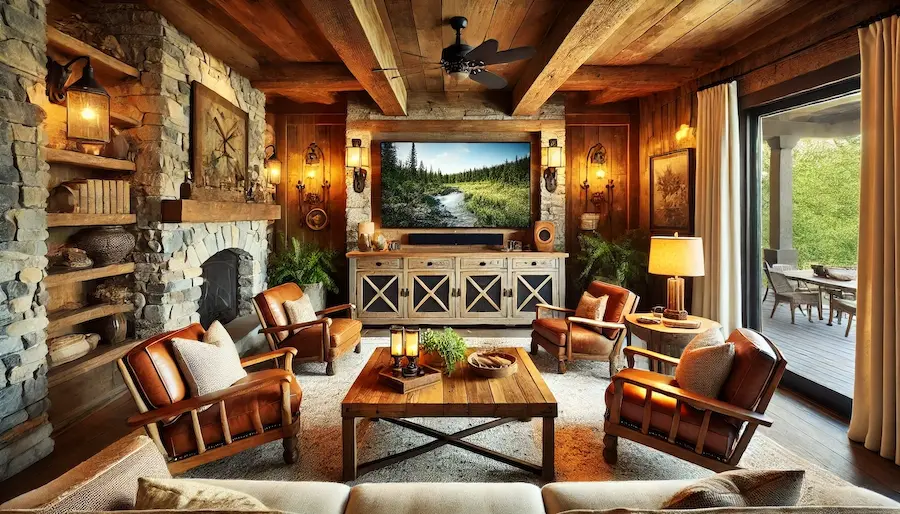A rustic entertainment room combines the warmth and charm of natural materials with modern amenities, creating an inviting space for relaxation and social gatherings. This article explores the history, key features, applications, and considerations for designing such a space.
History and Origins of Rustic Entertainment Rooms
Rustic design draws inspiration from natural elements and traditional craftsmanship, emphasizing simplicity and authenticity. Originating from rural and farmhouse aesthetics, this style incorporates materials like wood, stone, and metal to create a cozy and timeless environment. Incorporating rustic design into entertainment rooms reflects a desire to blend the comfort of modern living with the nostalgic appeal of the past.
Key Features of Rustic Entertainment Rooms
Rustic entertainment rooms are characterized by several distinctive elements:
- Natural Materials: Utilizing reclaimed wood, stone, and metal accents adds texture and warmth to the space. For example, a reclaimed wood entertainment center can serve as a focal point, showcasing the beauty of natural imperfections.
- Earthy Color Palette: Incorporating neutral tones such as browns, beiges, and grays, complemented by warm hues, enhances the cozy atmosphere. This palette reflects the natural environment and promotes a sense of tranquility.
- Exposed Beams and Stonework: Highlighting architectural features like wooden beams and stone walls adds character and authenticity to the room. These elements evoke a sense of traditional craftsmanship and connection to nature.
- Comfortable, Overstuffed Furniture: Choosing plush sofas and chairs upholstered in natural fabrics like linen or leather ensures comfort and aligns with the rustic aesthetic. These pieces invite relaxation and socialization.
- Ambient Lighting: Incorporating warm, soft lighting through fixtures like wrought iron chandeliers or lantern-style sconces creates a welcoming ambiance. This lighting enhances the room’s cozy and inviting atmosphere.
Applications of Rustic Entertainment Rooms
These spaces serve various functions within a home:
- Home Theaters: A rustic home theater combines modern technology with traditional design elements, offering a warm and inviting environment for movie nights. Features like wood-paneled walls and stone fireplaces can enhance the rustic charm.
- Game Rooms: Incorporating rustic decor into game rooms creates a cozy and engaging space for recreational activities. Elements like wooden game tables and vintage-inspired accessories contribute to the overall theme.
- Living Rooms: A rustic living room with an entertainment center serves as a central hub for family gatherings and relaxation. Features like a reclaimed wood entertainment center and earthy decor elements enhance the rustic appeal.
Considerations When Designing a Rustic Entertainment Room
When planning a rustic entertainment room, consider the following:
- Integration of Modern Technology: Ensure that modern entertainment systems are seamlessly incorporated without detracting from the rustic aesthetic. This can be achieved through custom cabinetry or concealed wiring.
- Balance Between Rustic and Contemporary Elements: Strive for a harmonious blend of rustic charm and modern functionality to create a space that is both beautiful and practical. Incorporating contemporary furniture with rustic materials can achieve this balance.
- Personalization: Incorporate personal touches, such as family heirlooms or handcrafted items, to make the space uniquely yours. These elements add character and tell a story, enhancing the room’s inviting atmosphere.
Conclusion
A rustic entertainment room offers a harmonious blend of natural materials and modern amenities, creating a cozy and inviting space for leisure and socialization. By thoughtfully integrating design elements and considering functionality, you can create a room that reflects both comfort and style.
